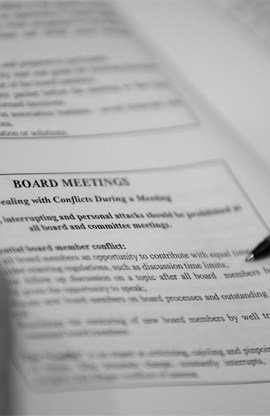Summary
DE-ESCALATE THE MATTER. It is WAY better to defuse tensions before they evolve into full-blown harassment problems. Effective communication skills and open meetings and business create an atmosphere for less perceived secrecy and potentially fewer problems.
“Help! What can our HOA/condo do to make this homeowner STOP?! We have a homeowner that is verbally abusive, the name-calling is offensive and vulgar – we feel harassed!”
You often hear us say, serving on your association’s board is a thankless job – and, many of you know this firsthand!
DE-ESCALATE THE MATTER. It is WAY better to defuse tensions before they evolve into full-blown harassment problems. Effective communication skills and open meetings and business create an atmosphere for less perceived secrecy and potentially fewer problems. However, when confronted with an upset homeowner, board members should listen, remain professional, control responses and respond to the problem.
FOCUS ON WHAT YOU CAN CONTROL. As a general rule of thumb, it is important to remember that you cannot control another individual’s abusive behavior, but you can control your response to it so that you do not make a tense situation worse. Additionally, state clearly and repeatedly in all venues, verbally and/or in writing, that harassment is unlawful and will not be tolerated. If the situation warrants, a police officer can/should be hired to attend the board meeting.
“Harassment” Defined—Black’s Law Dictionary defines harassment as “words, gestures or actions which tend to annoy, alarm or abuse another person.” To annoy, Black’s suggests, is “to disturb, irritate” or “cause discomfort”, while abuse consists of “insulting, hurtful or offensive wrongs or acts.” Whether the incidents are isolated or repetitive, the bottom line will always be whether the targeted individual felt intimidated or threatened, not whether the angry individual intended his/her actions as abusive or intimidating. In Arizona, A.R.S. Section 12- 1809 – “harassment” means a series of acts over any period of time that is directed at a specific person and that would cause a reasonable person to be seriously alarmed, annoyed or harassed and the conduct in fact seriously alarms, annoys or harasses the person and serves no legitimate purpose.
STEPS FOR GETTING THE OWNER TO STOP THE ABUSE
First Step– 1) Tell the individual verbally to stop; 2) keep a journal entry of the date, time and verbiage of calls or encounters; 3) note your verbal or written response; 4) keep all harassing emails.
Second Step– If the harassment does not stop. Have the board or management company write the offending individual a non-threatening letter, or have the association’s attorney write a letter describing the behavior, and stating that the individual will be subject to legal action if the behavior does not stop. (i.e. cease & desist letter from our firm)
Third Step– When a letter is not enough, the next step is to seek an injunction against the harassment (pursuant to A.R.S. Section 12- 1809). A board member who is on the receiving end of endless, abusive telephone calls or who is regularly assaulted verbally in public by an angry owner may seek an order prohibiting the “bully” from sending him e-mails and/or ordering him to remain a specified distance away.
Courts do not issue injunctions lightly. In most cases, the harassing actions must be part of a pattern rather than isolated incidents and the targeted individual(s) must feel threatened by the actions. If you are dealing with actual physical threats – if an owner raises a fist, pulls a gun or threatens bodily harm, call the police immediately. Even if you do not think the threats are real, having the police respond is a reasonable precaution and having a police report on file will also strengthen your case if you eventually seek an injunction against this individual.
If the Board were interested in pursuing an Injunction Against Harassment, each Board member would need to petition for one on their own against the Owner – the court would not issue “blanket” protection to all Board members
We strongly recommend you distribute the below FREE Mulcahy resources to your board members!
- Cheat Sheet, Dealing with Difficult People & Harassment
- Cheat Sheet, How to Deal with a Bully in a Community Association
It goes without saying, if at any time one feels that a person may resort to physical harm or violence, police should be contacted immediately. Matters such as this should be taken seriously. Please contact Beth Mulcahy, Esq. with questions at 602-241-1093 or bmulcahy@mulcahylawfirm.com.
